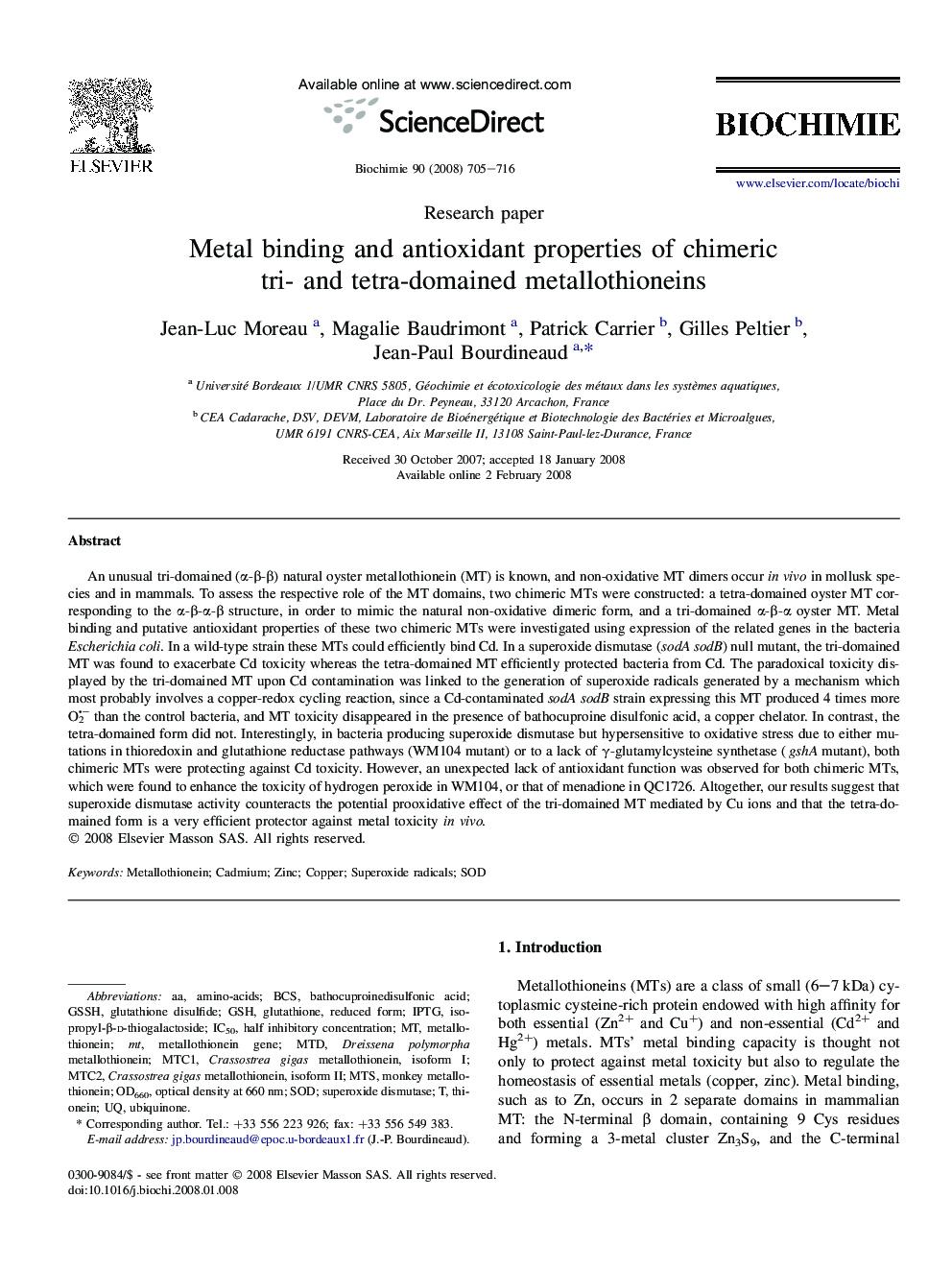| کد مقاله | کد نشریه | سال انتشار | مقاله انگلیسی | نسخه تمام متن |
|---|---|---|---|---|
| 1952878 | 1057237 | 2008 | 12 صفحه PDF | دانلود رایگان |

An unusual tri-domained (α-β-β) natural oyster metallothionein (MT) is known, and non-oxidative MT dimers occur in vivo in mollusk species and in mammals. To assess the respective role of the MT domains, two chimeric MTs were constructed: a tetra-domained oyster MT corresponding to the α-β-α-β structure, in order to mimic the natural non-oxidative dimeric form, and a tri-domained α-β-α oyster MT. Metal binding and putative antioxidant properties of these two chimeric MTs were investigated using expression of the related genes in the bacteria Escherichia coli. In a wild-type strain these MTs could efficiently bind Cd. In a superoxide dismutase (sodA sodB) null mutant, the tri-domained MT was found to exacerbate Cd toxicity whereas the tetra-domained MT efficiently protected bacteria from Cd. The paradoxical toxicity displayed by the tri-domained MT upon Cd contamination was linked to the generation of superoxide radicals generated by a mechanism which most probably involves a copper-redox cycling reaction, since a Cd-contaminated sodA sodB strain expressing this MT produced 4 times more O2− than the control bacteria, and MT toxicity disappeared in the presence of bathocuproine disulfonic acid, a copper chelator. In contrast, the tetra-domained form did not. Interestingly, in bacteria producing superoxide dismutase but hypersensitive to oxidative stress due to either mutations in thioredoxin and glutathione reductase pathways (WM104 mutant) or to a lack of γ-glutamylcysteine synthetase (gshA mutant), both chimeric MTs were protecting against Cd toxicity. However, an unexpected lack of antioxidant function was observed for both chimeric MTs, which were found to enhance the toxicity of hydrogen peroxide in WM104, or that of menadione in QC1726. Altogether, our results suggest that superoxide dismutase activity counteracts the potential prooxidative effect of the tri-domained MT mediated by Cu ions and that the tetra-domained form is a very efficient protector against metal toxicity in vivo.
Journal: Biochimie - Volume 90, Issue 5, May 2008, Pages 705–716